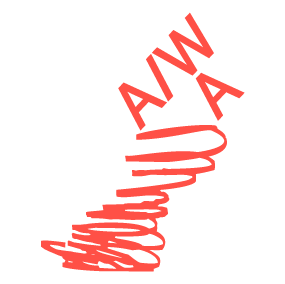
This self-help/reading group will look to open discussions around the unregulated structure of visual art, and examine the role that the social and ‘critical’ play into shaping its economy, programmes, organisation, and potential.
March 20th
In contemporary art transparency is a kind of foil overlaying secrecy; it does not work. From the hidden bling of the rich to the routine self-critical utterances of the artist or museum; these power grouping makes everything transparent except its own key relationships. For example Liam Gillick, a figure from the 90s who prefigured some of the problems discussed here. His aluminium and plexiglass structures embody notions of discursive space and democratic negotiation, yet these are shown in galleries and institutions whose direction he influences through long term friendships with curators. These synergies are not transparent but invisible. And the same could be said about the not fully publicised friendship between myself and Isabelle Graw of Texte zur Kunst.
While discussing the various relations that make up art galleries and museums so far in this reading group, an obvious element missed has been the position of the artwork itself (its agency/potential). What actions does it set in motion, what operations can it begin to undermine within the already highly organised logic of cultural space, and how is it conditioned or limited by such a context? I think that last one was an essay question on my BA, but it’s still important to think about!
For the next session we will be discussing Merlin Carpenter’s text The Tail that Wags the Dog (quoted above), which addresses both the position of an artwork within the structures of production, display and reception that contemporary art organises, and the undeclared elements (and contradictions) of a ‘self-critical’ position routinely offered as tonic.
February 20th

[image from Taste Buds: How to cultivate the art market commissioned by Arts Council England] A frequently heard question when discussing the politics of contemporary art: at what point does idealism end and pragmatism begin? Or in other words, for artists who hope to make work that is both political in content and form, should they include a critique of arts’ grisly support systems, or just accept it to get something made? Before answering, see the publicly funded East London gallery that commissions artist who attempt to ‘examine’ capital or institutional critique, but simultaneously receive donations from the CEO of a multi-billion dollar trading company and the Zabludowicz Foundation. See the local institute of contemporary art that aims to return to its ‘radical roots’ yet refuses to allow its staff to unionise (along with the New Museum for that matter). Or the art fair organising panel discussions about whether artists can afford to live in London, whilst actively contributing to the cities gentrification. Or the studio provider that uses offshore accounting whilst receiving huge amounts of ACE funding…..
The list goes on and on, proving that these are not simply bad actors in a ‘good’ network, but the standard model. And yet such information is rarely published due to it’s often unverifiable nature (you could call it gossip!) as well as it’s perceived irrelevance to the institutions operations.
For this session then, we will begin by discussing such antagonisms via a text written by Anthony Davies that traces a few of these trends (such as the existence of Frieze), and usefully surmises many of the contradictions that must be negotiated today.
January 24th
Which female American dealer fell into the canal whilst taking a leak, and has also broken her nose?
Which Frieze writer was seen kissing which Berlin dealer at the Gavin Brown/Herald St/Balice Hertling/Gio Marconi party?
Which supposedly sober ‘rock’ musician was seen screaming at two different people at different times, about seemingly very little?
Ah, hell with it – we’re not Popbitch… and there are no super-injunctions being banded about round these parts! The answers are; Michelle Maccarone, Paul Teasdale, Tanya Leighton and Courtney Love! Hurrah! – from Cathedral of Shit
While often (and rightly) derided as sneering insider gossip, the short lived blog Cathedral of Shit reported from the behind the frontlines of the art world, ignoring its objects and focusing instead on drunk oligarchs, pop stars, rogue curators, and the social relations that make up the supposedly ‘meritocratic’ art institutions we (as artists and viewers) have to negotiate. Despite it’s obvious deficiencies, this kind of information within contemporary art is both an essential resource, as it is how artworks accrue value (i.e. being bought and sold via a loose and unregulated arrangement of institutions, critics, and state support), and yet is never spoken about publicly by those involved.
For this reading group session we will discuss the blog as a whole; it’s difference to actual institutional critique or criticism (such as Gary Indiana from the last session) and where such writing now manifests (e.g. Twitter, Artforum news, Art Monthly’s Artnotes etc.
December 20th
For the first session, we’ll be reading two short texts from Gary Indiana’s collection of criticism from his days at the Village Voice in New York, Vile Days, and for the following session we will be discussing sections of Cathedral of shit.
This event will be the first in a regular monthly reading group happening on the 20th of each month, with the next session happening on January 20th. Wine and snacks will also be provided.